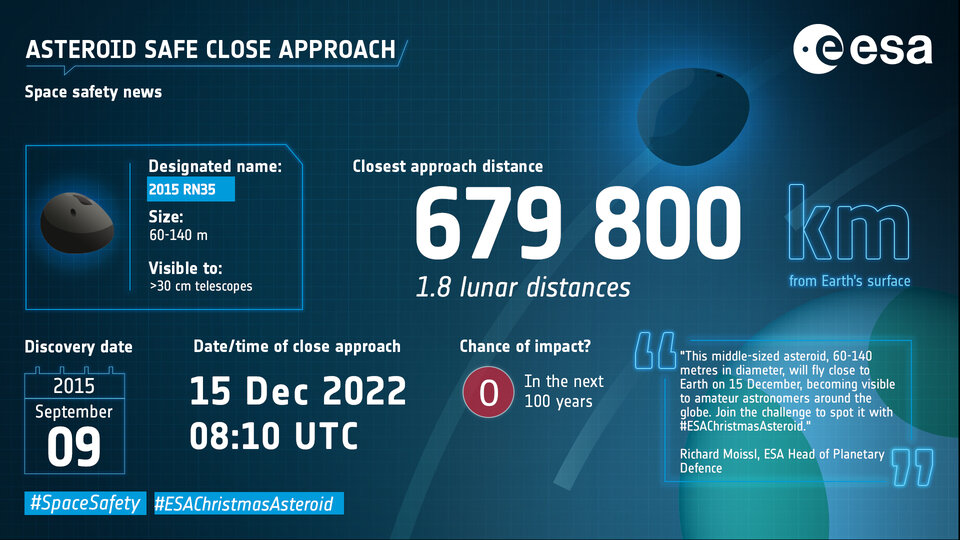12.12.2022

In brief
A 60-140-m asteroid is approaching Earth, and to celebrate the release of ESA’s new asteroid toolkit we are calling on amateur astronomers to find it. Our Christmas asteroid, 2015 RN35, poses no threat, but like many middle-sized space rocks out there, we just don’t know that much about it.
In-depth
- 2015 RN35 will make a safe close approach of Earth at 08:12 UTC (09:12 CET) on 15 December, passing by at 686 000 km – just under two lunar distances.
- Observers in the Southern hemisphere will get the best view during close approach, but Europe will get a chance over the following days until about 19 December.
- From 15-17 December, 2015 RN35 will have a visual magnitude below 14. (For reference, Pluto has a visual magnitude of 14).
- Telescopes 30 cm and larger should be able to detect our Christmas asteroid – we look forward to seeing your observations!
- Use the hashtag #ESAChristmasAsteroid on social media to share your results, which we will share on our @esaoperations channel.
A perfectly ordinary asteroid - probably
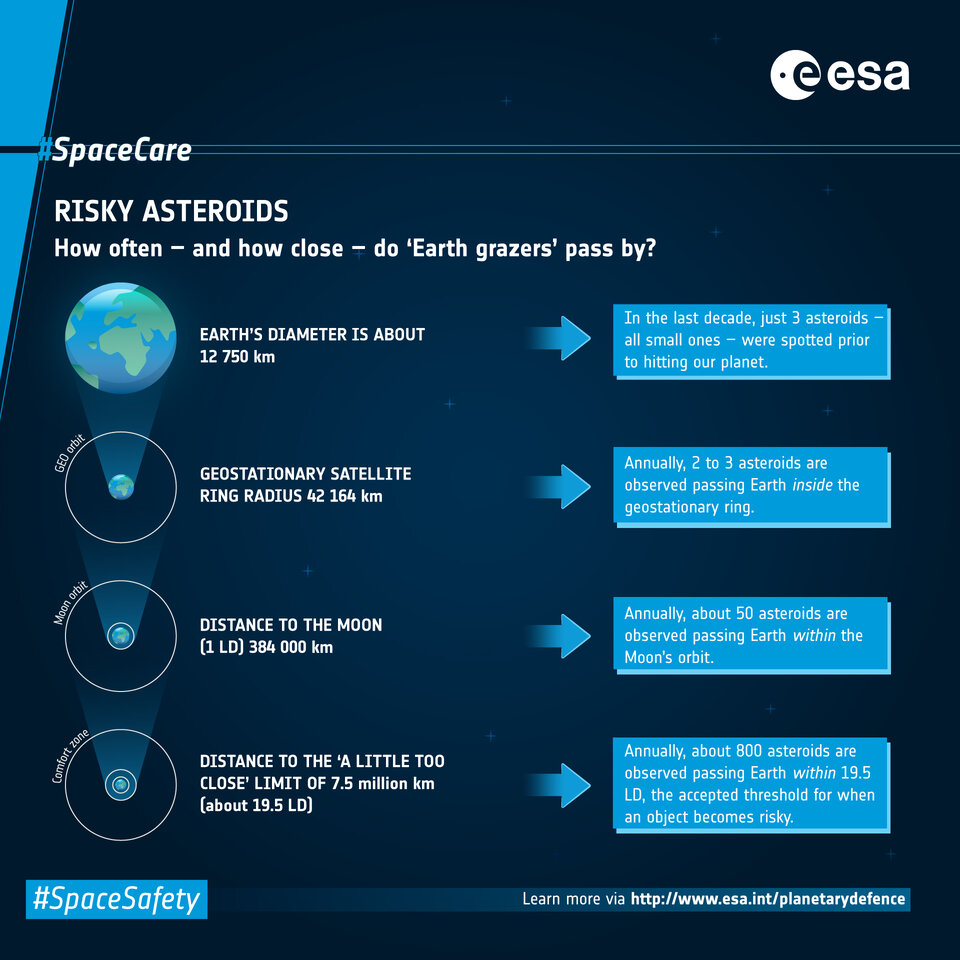
We don’t call this a challenge for no reason. 2015 RN35 will not shine bright in the skies like the star of Bethlehem did millennia ago. No. Smaller than the statue of liberty this asteroid is pretty little on astronomical scales. And as flybys go, at just under two times the distance to the Moon, it’s not likely to make newspaper headlines (although, you never know. Sigh.)
So why is 2015 RN35 interesting? Firstly, there’s not a single asteroid out there that isn’t. Near-Earth asteroids fascinate ESA’s Planetary Defence Office in particular because they give us key insights into the composition and trajectory of potentially hazardous objects.
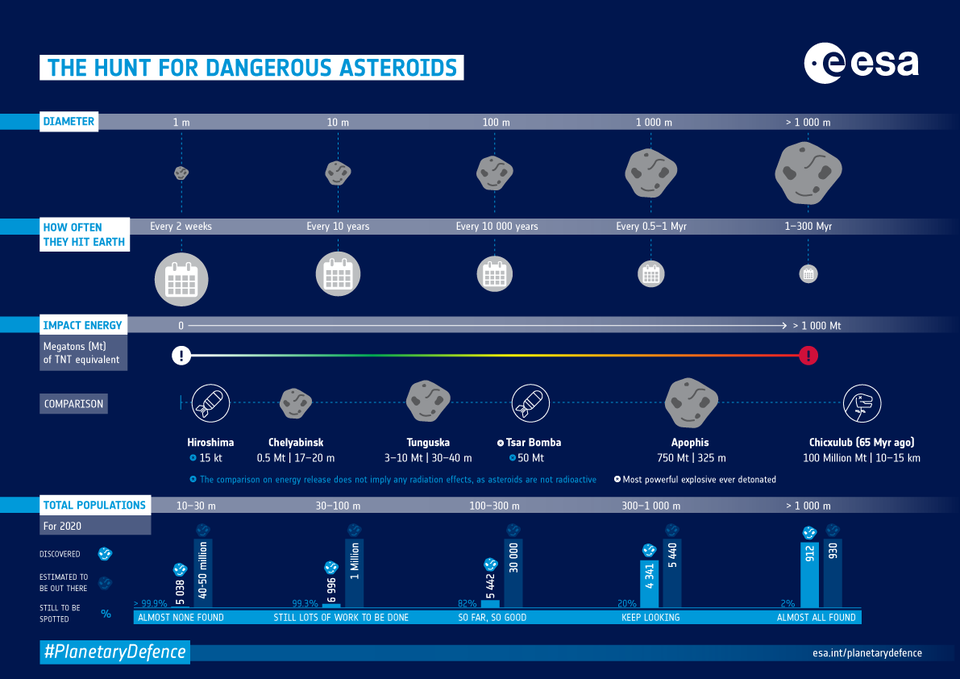
Secondly, this asteroid isn’t well known. We don’t know what it’s made of or precisely how big it is or if it’s spinning on its axis or even know its orbit particularly well. (Enough to know it won’t strike in the next century!).
This uncertainty makes it like hundreds of thousands of similarly sized asteroids out there. While we’ve found nearly all of the huge planet-killers, most of these middle-sized asteroids – of which there are several hundred thousand, and which could do great damage to a local area if they were to impact – are yet to be discovered.
Catch an asteroid with ESA’s asteroid toolkit
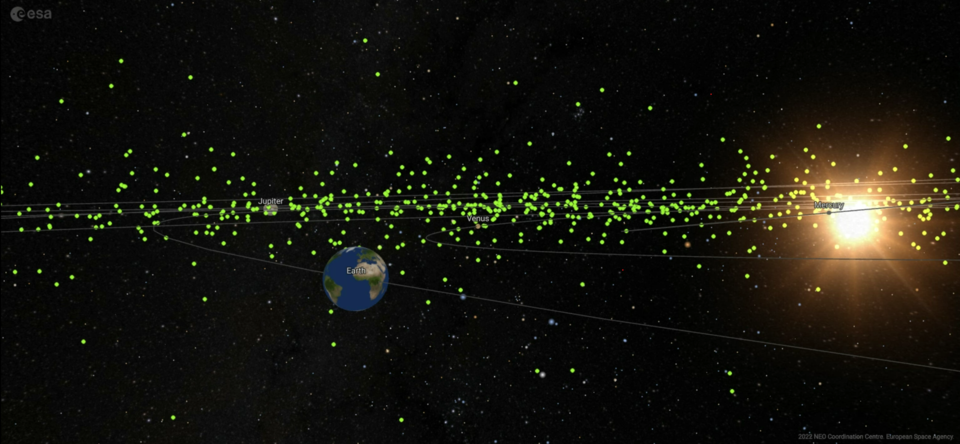
ESA’s asteroid toolkit has been created by the Agency’s Near-Earth Object Coordination Centre(NEOCC), based in Rome.
“We use these tools every day to plan our observations, to visualise asteroid close approaches and to help us understand and explain the varied asteroid populations in the Solar System and the risk we face,” explains Juan-Luis Cano, Information System Manager at the NEOCC.
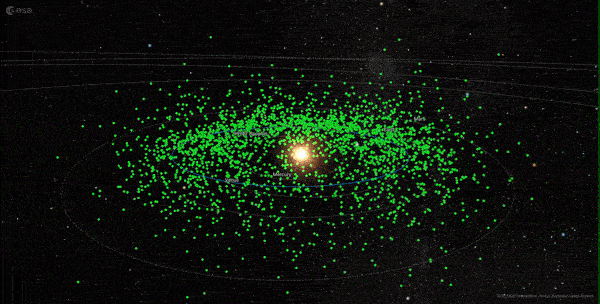
“We want them to be as useful to the rest of the world as they are to us, because Planetary Defence is a global effort.”
With the new near-Earth object (NEO) Toolkit you can visualise the Christmas asteroid’s orbit and its 15 December flyby, including when it will be visible from different locations on Earth, find out more about the Apollo group of asteroids it belongs to and of course, plan your observations from exactly where you are in the world.
Freely available via neo.ssa.esa.int/neo-toolkit, the tools are for professional and amateur astronomers alike, along with journalists, media and schools looking for accurate visuals and anyone with an interest in asteroids.
The NEO Toolkit includes the Observation Planning Tool, Sky Chart Display Tool, Orbit Visualisation Tooland the Flyby Visualisation Tool.
For help using the Toolkit, check out our guide.
Share with #ESAChristmasAsteroid
If you manage to spot it, share your observations on Twitter, Facebook, Instagram or Reddit with the hashtag #ESAChristmasAsteroid, along with a little information about yourself and your location. We can’t wait to see your little dots and trails that, probably, wont make it onto mobile and computer screensavers, but do signify ancient remnants of the early Solar System, and vitally are the bread and butter of planetary defence around the globe.

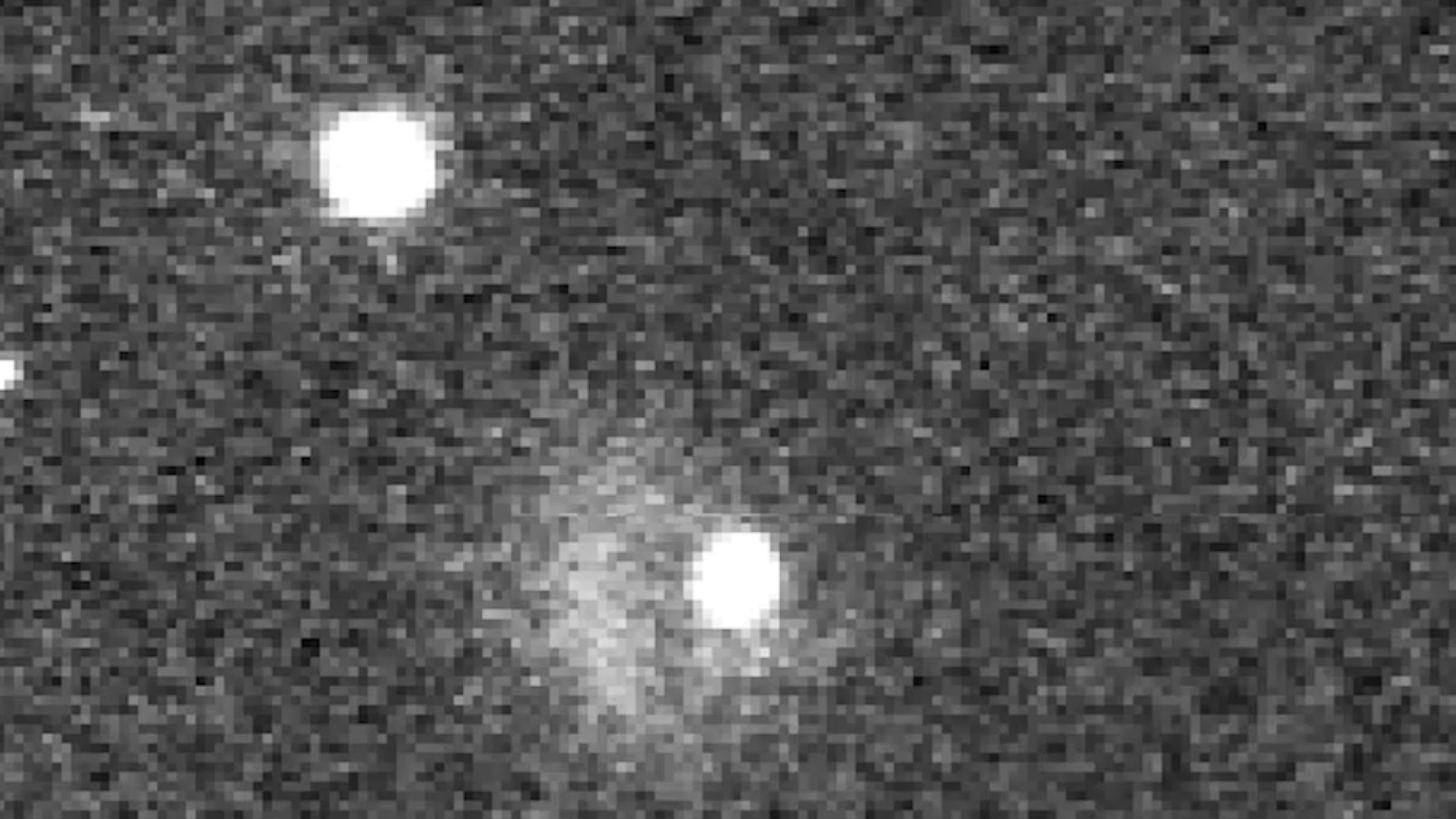
Access the video
“This is the kind of work ESA’s NEOCC does every day, often with even dimmer asteroids using even larger telescopes, such as the European Southern Observatory’s Very Large Telescope (VLT) and others in the NEOCC’s network of rapid-access telescopes spread all over the globe,” explains Richard Moissl, ESA’s Head of Planetary Defence.
“With these observations, we determine the motion of asteroids and project their path into the future, in order to know if – when – an asteroid could strike. As the recent DART impact showed, and as ESA’s Hera mission will expand on, with enough warning an asteroid impact is the only natural disaster we can prevent.”
If you miss this close approach, you can always look for the next one on 27 December with similar visibility, 2010 XC15. Or see the NEOCC website for all upcoming close approaches.
Quelle: ESA

